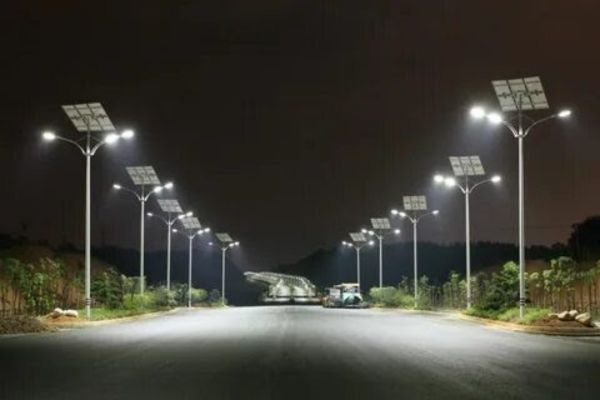In the global shift toward smarter urban environments, smart street lighting has emerged as a critical enabler of efficient, secure, and sustainable cities. The Smart Street Lighting Market is gaining substantial momentum as cities worldwide invest in advanced technologies to upgrade public infrastructure. As smart cities evolve, intelligent lighting solutions are proving to be more than just a trend—they are a necessity.
Smart street lighting refers to the use of energy-efficient LED lights integrated with digital technologies such as sensors, cameras, and communication networks. These systems offer real-time control, remote monitoring, and automated adjustments based on environmental and situational conditions. According to insights from Persistence Market Research, the demand for smart lighting systems is rising as cities seek to reduce energy consumption, lower maintenance costs, and enhance public safety.
Smart Infrastructure Begins with Smart Lighting
One of the foremost reasons why smart street lighting is pivotal to smart city development is its ability to improve urban infrastructure. Traditional street lights are static and energy-draining, offering little flexibility or operational insight. In contrast, smart lighting systems are dynamic. They adjust brightness based on pedestrian or vehicular movement, time of day, or even weather conditions. This adaptability reduces unnecessary energy consumption and contributes to environmental sustainability, a cornerstone of any smart city.
Persistence Market Research highlights that cities with integrated smart lighting systems often report up to 50% or more in energy savings. Such savings demonstrate how intelligent lighting is not only environmentally sound but also economically viable.
Enhancing Public Safety and Community Well-Being
Smart street lighting significantly enhances public safety and security. Well-lit areas naturally deter criminal activity and improve visibility for both drivers and pedestrians. With embedded motion sensors and real-time alerts, smart lights can detect unusual activities and trigger immediate responses. These features are especially useful in emergency situations, such as road accidents or natural disasters, where lights can guide emergency vehicles or help evacuate people.
Persistence Market Research notes that many municipalities using smart lighting have observed a notable decrease in nighttime incidents and improved surveillance capabilities, contributing to an overall sense of public safety and trust.
Reducing Energy Usage and Environmental Impact
Energy conservation is at the heart of smart street lighting systems. LED-based smart lights use significantly less electricity than traditional lighting technologies. Moreover, they can be automatically dimmed during off-peak hours, leading to additional energy savings. Smart lighting helps cities reduce their carbon footprints and aligns with climate action goals.
As stated in several Persistence Market Research reports, the Smart Street Lighting Market is being driven largely by regulatory mandates and environmental goals. Cities are under pressure to reduce emissions, and smart lighting serves as an efficient and practical tool to meet these targets.
Enabling Real-Time Urban Intelligence
What truly differentiates smart street lighting from conventional systems is its ability to collect and share data. With IoT sensors, smart lights can monitor temperature, humidity, air pollution, noise levels, and foot or vehicle traffic. This real-time information can be used to make timely and strategic decisions about urban management.
For example, data showing increased foot traffic in certain areas could lead city authorities to allocate more security resources or street vendors to optimize business operations. Persistence Market Research emphasizes that this data-centric approach is reshaping how cities operate—making them more responsive, efficient, and resident-friendly.
Integrating with Other Smart City Services
Smart street lighting poles are increasingly being designed as multifunctional assets. Besides lighting, they can house surveillance cameras, 5G transmitters, EV charging stations, and even public Wi-Fi. This integrated approach maximizes the utility of street infrastructure and supports the broader smart city vision.
As per Persistence Market Research, the integration of smart lighting with communication and sensor networks offers cities a strategic advantage. Instead of deploying multiple independent systems, cities can create consolidated, efficient networks that serve multiple public needs without additional costs.
Economic Efficiency and Long-Term Savings
While the upfront cost of smart street lighting may be high, the long-term financial benefits are considerable. Smart lights require less maintenance, have longer life spans, and reduce electricity bills significantly. Cities can also generate revenue through features such as digital advertising screens on smart poles or by leasing pole space to telecom providers.
According to Persistence Market Research, municipalities that invest in smart lighting systems typically achieve a return on investment within a few years. This makes smart lighting one of the most cost-effective urban infrastructure upgrades available today.
Global Adoption and Growing Market Momentum
The adoption of smart street lighting is a global phenomenon. Leading smart cities like Barcelona, Singapore, Amsterdam, and San Diego have already implemented large-scale smart lighting projects. In India, under the Smart Cities Mission, numerous cities have rolled out smart lighting initiatives to enhance public safety and energy efficiency.
In emerging regions such as Africa and Southeast Asia, the push for urban development is accelerating the adoption of smart lighting systems. Persistence Market Research identifies Asia-Pacific and Latin America as the fastest-growing regions in the Smart Street Lighting Market, fueled by rapid urbanization and government initiatives to modernize infrastructure.
Addressing Implementation Challenges
Despite its many benefits, implementing smart street lighting is not without its challenges. High initial costs, technical complexity, cybersecurity concerns, and integration with outdated infrastructure can slow down adoption. However, advancements in technology, strong vendor partnerships, and government funding programs are gradually resolving these issues.
Cities can also benefit from public-private partnerships, where private companies invest in the infrastructure and earn returns through service models, thus reducing the financial burden on local governments.
A Bright Path Toward Urban Transformation
Smart street lighting is far more than an upgraded lighting solution—it is a foundational building block for smart cities. It provides a range of benefits, from reducing energy consumption and enhancing public safety to generating valuable data and supporting integrated urban services. The growth of the Smart Street Lighting Market reflects its increasing relevance in urban planning worldwide.
As consistently underscored by Persistence Market Research, cities that embrace smart lighting not only reduce operational costs but also elevate their urban capabilities to meet 21st-century demands. The time to transition from traditional lighting systems to intelligent, data-driven, and sustainable solutions is now.
For municipal leaders, infrastructure developers, and policymakers, smart street lighting represents a critical step toward building safe, resilient, and future-ready urban spaces.
















